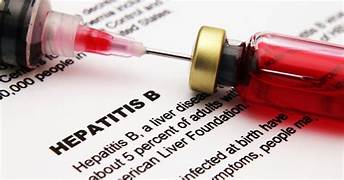On October 25, 1984, the United States faced a significant public health challenge as an outbreak of hepatitis occurred in a small town, drawing attention to the importance of disease prevention and control measures. The outbreak shed light on the dangers of hepatitis and highlighted the need for increased awareness and proactive measures to prevent its spread. Hepatitis is a viral infection that affects the liver and can cause a range of symptoms, including fatigue, jaundice, nausea, and abdominal pain. It can be transmitted through various means, including contaminated food or water, unsafe injection practices, and sexual contact. The outbreak in 1984 was particularly troubling because it involved a large number of individuals in a concentrated area, leading to heightened concerns among public health officials. The outbreak originated in a small town, where several cases of hepatitis were initially reported. As the number of cases continued to rise, it became evident that urgent action was needed to contain the spread of the disease. Public health authorities, including the Centers for Disease Control and Prevention (CDC), were called upon to investigate the outbreak and implement control measures. One of the key challenges in managing the outbreak was identifying the source of the infection. Through extensive epidemiological investigations and laboratory testing, it was determined that the outbreak was linked to contaminated food served at a local restaurant. This finding prompted immediate action to shut down the establishment and implement measures to prevent further transmission. In response to the outbreak, public health officials launched a comprehensive awareness campaign to educate the public about hepatitis and the importance of preventive measures. Efforts were made to inform residents about the symptoms of the disease, modes of transmission, and steps they could take to protect themselves and their communities. This included promoting safe food handling practices, emphasizing the importance of hand hygiene, and encouraging individuals to seek medical attention if they experienced any symptoms. Additionally, efforts were made to provide medical care and support to those affected by the outbreak. Screening and testing services were made available to identify individuals who may have been infected, and appropriate medical interventions were provided. The community rallied together to support those affected, highlighting the importance of solidarity and compassion in times of crisis. The outbreak also had a lasting impact on public health policies and practices. It served as a wake-up call for improved surveillance systems and strengthened measures to prevent and control infectious diseases. The incident prompted a reevaluation of food safety regulations and led to stricter guidelines for food establishments to ensure the safety of the public.
25 Oct, 1984 U.S.A. Hepatitis
